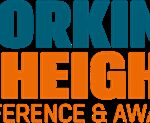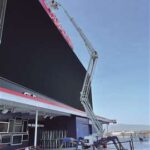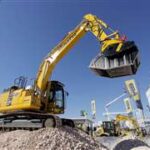How Scissor Lifts vs. Aerial Lifts Compare
Scissor lifts and aerial lifts are indispensable tools in the construction, maintenance, and logistics industries. These machines are designed to safely elevate workers to perform tasks at heights, but they differ significantly in their functionality and applications.
Scissor Lift vs. Aerial Lift: Key Differences
Both scissor lifts and aerial lifts are designed to elevate workers, but the main difference lies in the range of motion. Scissor lifts primarily move vertically, while aerial lifts can provide both vertical and horizontal movement, offering greater flexibility in accessing hard-to-reach areas.
OSHA Definitions and Regulations
OSHA defines aerial lifts as machines used to lift workers to elevated work platforms, with the flexibility to move both vertically and horizontally. They are often used for construction, power line work, window washing, tree maintenance, and more. Aerial lifts typically require the use of an OSHA-approved operator to ensure safety and compliance.
In contrast, scissor lifts are designed to lift workers and equipment only vertically. They are ideal for tasks such as sign repairs, gutter cleaning, and maintenance work where the work area is accessible directly above the lift’s base. Scissor lifts are also used in environments like warehouses and manufacturing facilities.
Functional Differences
- Aerial lifts offer horizontal movement, making them versatile for tasks that require workers to extend over obstacles, such as power line maintenance or working on top of structures like roller coasters.
- Scissor lifts, on the other hand, can only elevate vertically and are typically used for tasks like warehouse shelf stocking or performing maintenance at specific heights.
What is an Aerial Lift?
Aerial lifts, according to OSHA and ANSI, include vehicle-mounted rotating platforms designed to elevate personnel. These lifts are commonly used for tasks requiring both vertical and horizontal movement, such as:
- Vertical towers
- Aerial ladders
- Articulating boom platforms
Aerial lifts can often reach heights of up to 180 feet and can be articulated to reach above and over various structures, making them ideal for outdoor tasks that scissor lifts cannot accomplish.
What is a Scissor Lift?
A scissor lift is defined as a mobile supported scaffold used to lift workers vertically. Unlike aerial lifts, scissor lifts do not offer horizontal movement. They operate using crisscrossing metal beams that extend and retract vertically. Scissor lifts are ideal for tasks requiring stable elevation without needing to reach over or around obstacles.
A key safety difference between scissor lifts and aerial lifts is that scissor lift operators are not required to wear harnesses and lanyards when guardrails are in place, unlike aerial lift operators who must always use personal fall protection systems.
Scissor Lift vs. Aerial Lift: Why Choose One Over the Other?
Scissor Lift Advantages
- Cost-effective: Scissor lifts are often cheaper than aerial lifts, making them an affordable option for many businesses.
- Space-saving: Their compact design makes them easy to store and maneuver, especially in confined spaces.
- Larger platforms: Scissor lifts can accommodate multiple workers, making them ideal for tasks requiring teamwork.
Aerial Lift Advantages
- Greater versatility: Aerial lifts can reach heights of up to 180 feet and allow for horizontal movement, making them better suited for tasks that require reaching across large areas.
- Rough terrain capability: Some aerial lifts are designed to operate on uneven and challenging surfaces, which is essential for construction sites or outdoor maintenance.
The Importance of Safety in Aerial and Scissor Lifts
One of the most important considerations when comparing scissor lifts and aerial lifts is safety. Both machines have unique safety requirements that operators must follow to prevent accidents and injuries. OSHA mandates that all operators undergo comprehensive training to ensure safe operation.
CertifyMeOnline.net offers training programs that cover all the necessary safety protocols, from correct positioning to fall protection, stabilization, and hazard recognition. Whether you’re using a scissor lift or an aerial lift, proper training is essential for OSHA compliance and worker safety.
Training for Scissor Lifts vs. Aerial Lifts
Regardless of whether you’re using a scissor lift or an aerial lift, the proper training is crucial. Operators must understand how to operate the equipment safely, recognize hazards, and perform necessary inspections. CertifyMeOnline.com offers OSHA-compliant training that covers scissor lifts and aerial lifts, ensuring your workers are well-prepared to handle both types of equipment.




